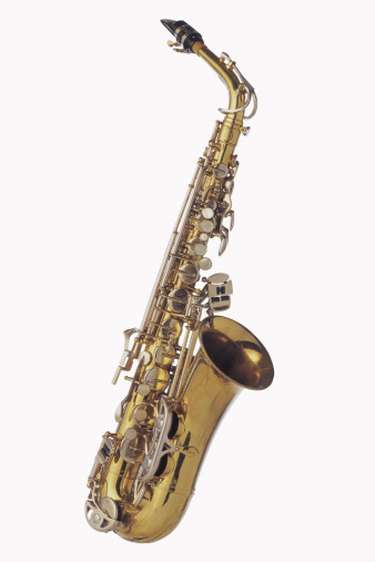
Brass is an alloy made of various proportions of zinc and copper depending on the properties need in the application of the brass. Brass is commonly used as a decoration due to its bright gold-like color: low friction applications like locks, doorknobs, bearings, ammunition, zippers and valves. It is also used extensively in the construction of musical instruments like horns and bells for its rich acoustic properties. Brass is also used where it's important that sparks not be made, as in fittings for explosive gases due to its relative softness compared to other metals.
Step 1
Use an oxyacetylene torch in most instances to weld brass. Since the oxygen and acetylene are stored individually you have more control over the torch's flame. Before welding the brass find out the zinc content of the material you are going to weld because zinc has a lower melting point than copper.
Video of the Day
Step 2
Mix a paste of braze-welding flux and water and apply it to the surfaces that are going to be welded.
Step 3
Lower the acetylene in the mix until you have a strong oxygen rich flame able to produce coating on the base metal. The flame should have sufficent oxygen to prevent zinc fumes coming off the brass, but not to much oxygen that the coating creates difficulty welding.
Step 4
Use high quality braze welding filler if color matching is not an issue. Because of copper's high melting point, low zinc brass can be braze welded or fusion welded.
Step 5
Use a welding tip one size larger than you would use to weld steel of the same thickness, due to the higher heat conductivity of brass.
Video of the Day